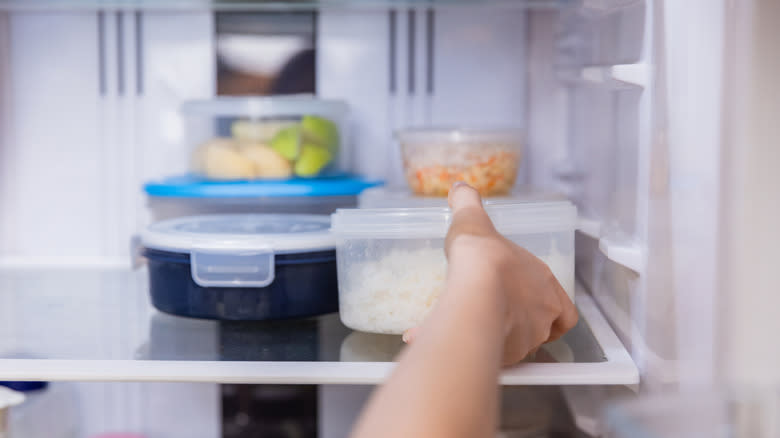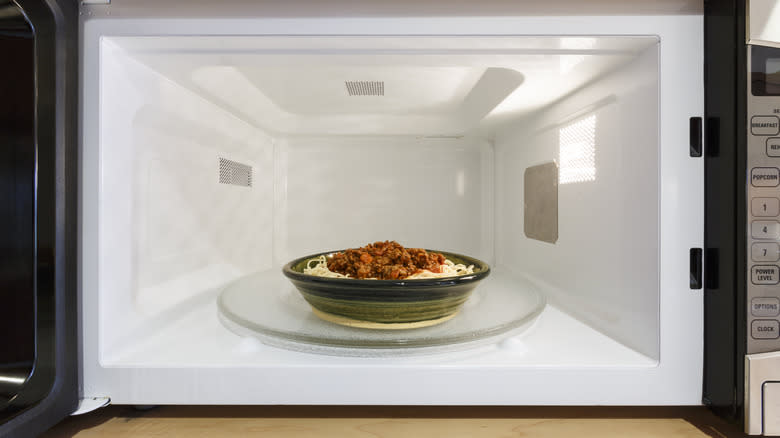Why You Should Bring Leftovers To Room Temperature Before Reheating

We've all been there, faced with the age-old dilemma of reheating leftovers. The choice of methods and timing can mean the difference between a mouthwatering meal and a less-than-exciting experience. But here's a lesser-known secret: Letting leftovers come to room temperature before reheating can be a game-changer. Not only does it save time, but it also helps prevent overcooking, ensuring your meal retains its original flavor and texture.
When you allow refrigerated leftovers to sit at room temperature, you're giving it a head start. Starting at a higher initial temperature means less time in the microwave or on the stovetop, saving you precious minutes. For most refrigerated leftovers, a 15-minute wait at room temperature is the sweet spot. This time allows the food's core temperature to rise slightly, making the reheating process smoother and more efficient. Keep in mind that this guideline works well for dishes like stews, pasta, casseroles, and meats.
Reheating food straight from the fridge can lead to uneven heating, with the exterior scorching while the interior remains cold. Allowing your leftovers to warm up a bit before reheating helps achieve a more even and thorough warming process. But this isn't the only reason some foods should be handled with more care when reheating.
Read more: Vinegar Cooking Hacks You'll Wish You Knew Sooner
Be Careful Reheating These Foods

While room temperature reheating is a quick and easy trick for most dishes, some foods require extra caution to avoid food poisoning. A few culprits to be cautious of include rice, seafood, and some vegetables such as mushrooms, potatoes, and spinach. Ultimately, it's important to understand which foods have potentially harmful bacteria to be wary of when reheating. It takes just 20 minutes for bacteria to start spreading once foods come to temperature.
Leftover rice should be treated with care. It can harbor harmful bacteria that multiply rapidly at room temperature. Instead of letting it sit out, reheat rice directly from the fridge and consume it immediately. Delicate seafood, like shrimp and scallops, is best reheated directly from the refrigerator to maintain its freshness and texture. Some produce, such as potatoes and mushrooms, also contain bacteria that must be heated to a high enough temperature in order to kill them.
So, the next time you're faced with the task of reheating leftovers, consider the room temperature hack. Allowing your refrigerated dishes to come to room temperature before reheating can be a game-changer. With this simple yet effective technique, you can enjoy reheated leftovers that taste just as delightful as the day they were made.
Read the original article on Tasting Table.

